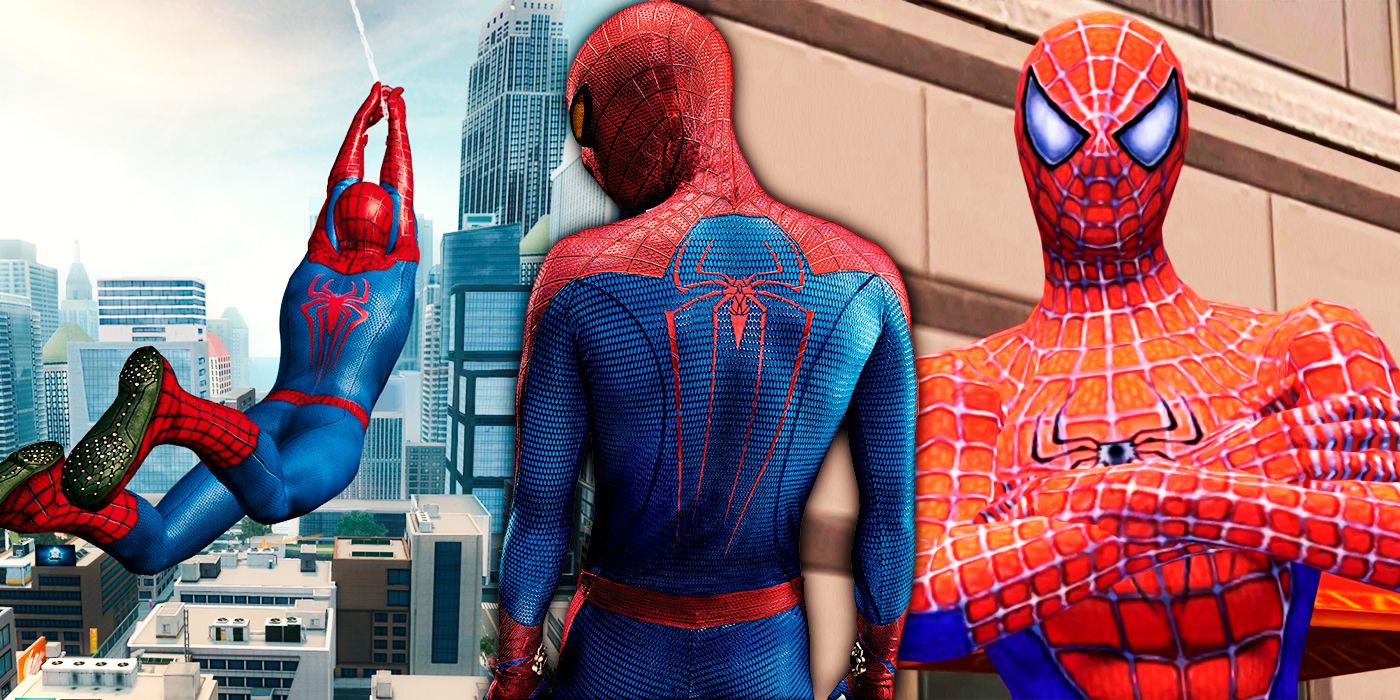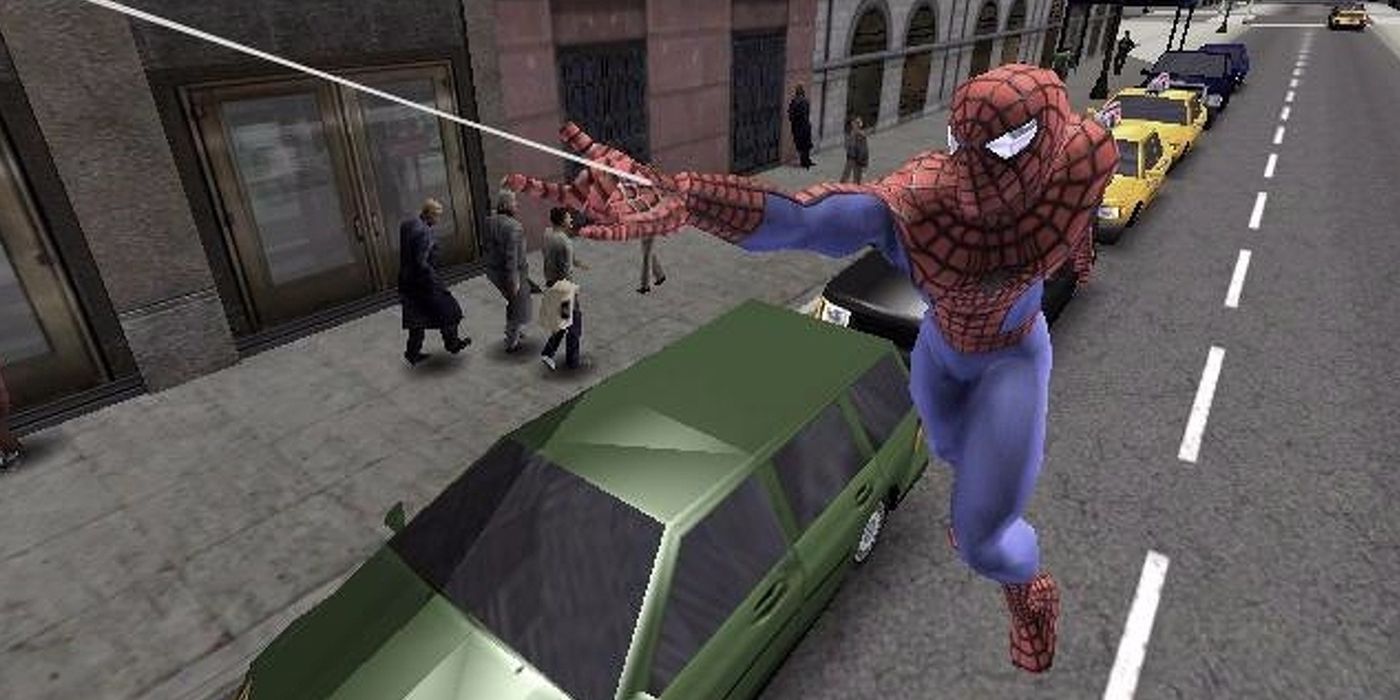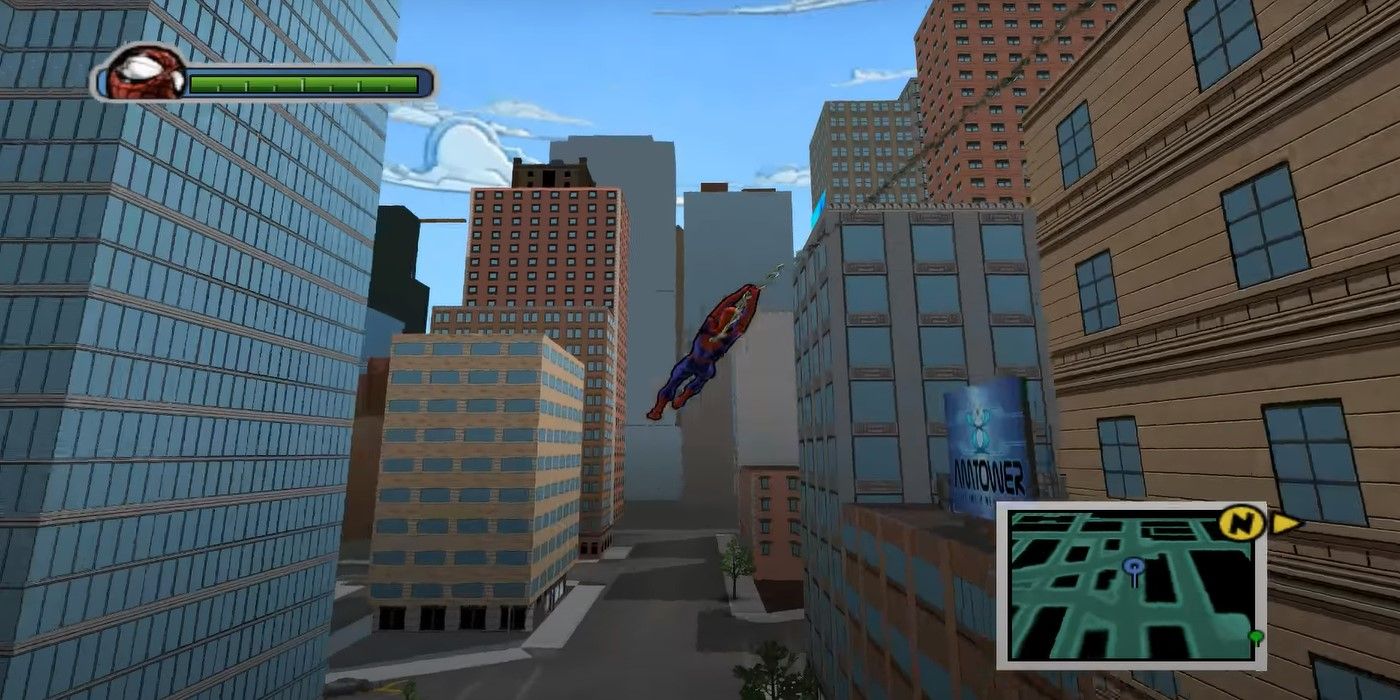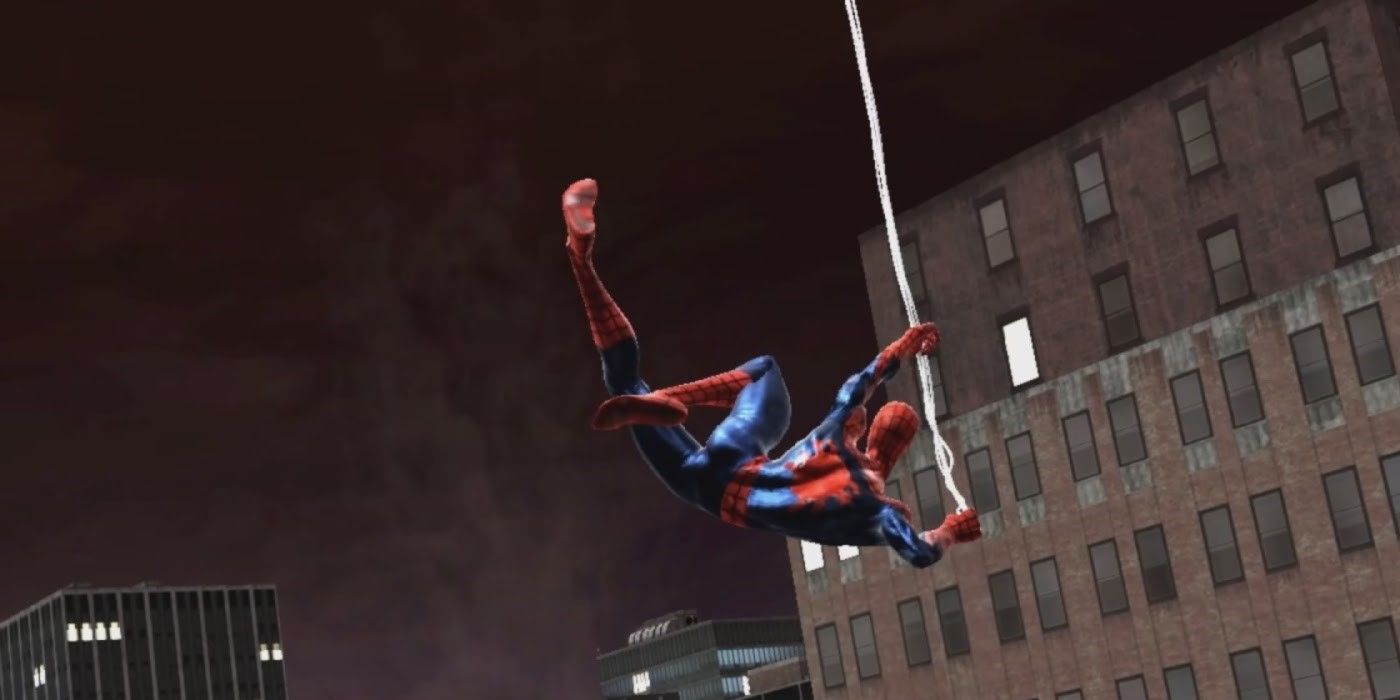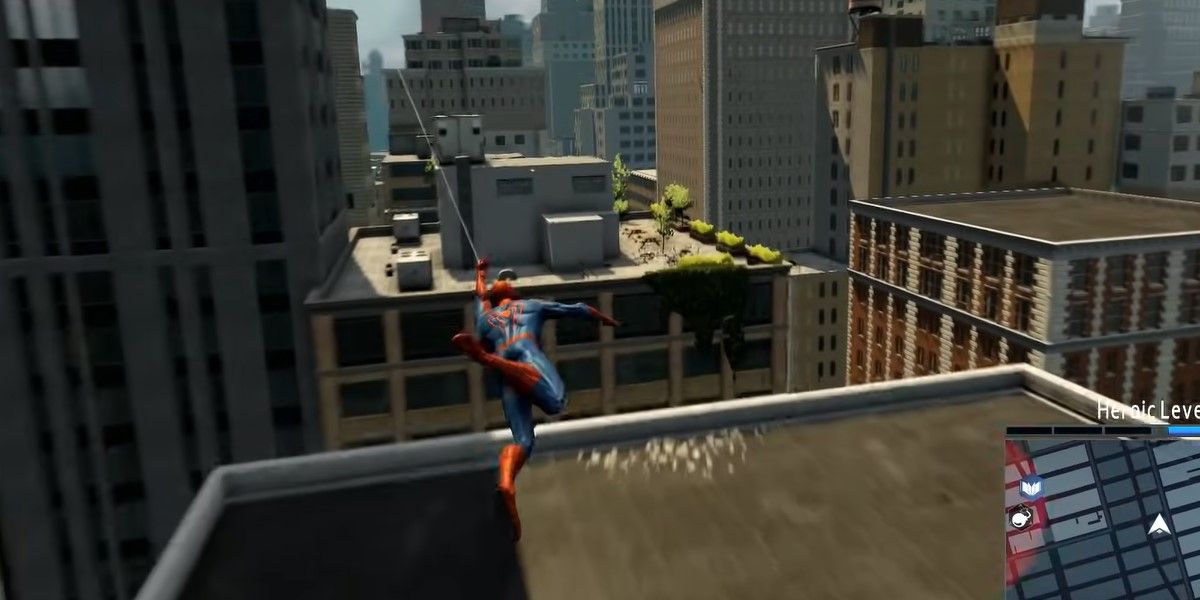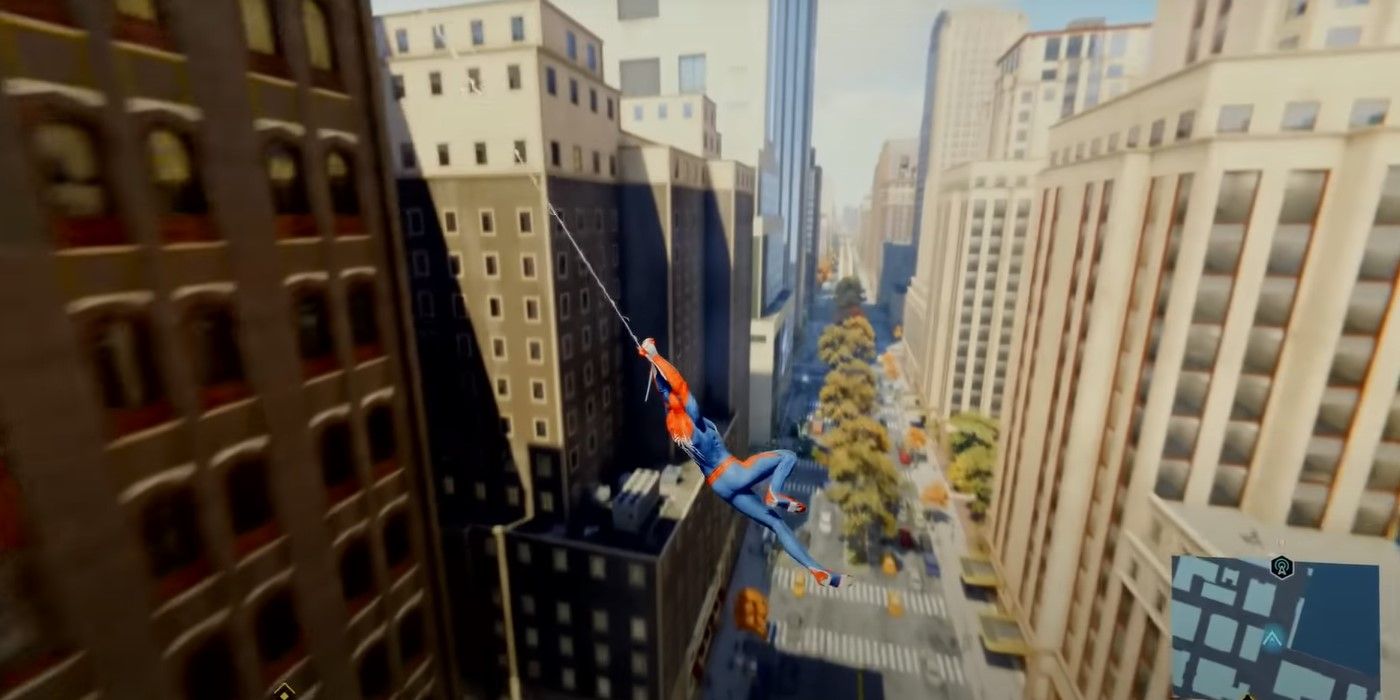Although Spider-Man is beloved on all forms of media, one platform where he has helped fans be the character in video games. From early consoles to current-gen systems, there's always been a wall-crawler for gamers to enjoy. But as the years progressed, the technology and mechanics have advanced to help offer continuously evolving mechanics. Asa result, aspects like web-swinging have become a prominent staple for the character.
That being said, while web-swinging is a mechanic that has been around for at least two decades, it's still changing and being improved. To accomplish these feats, it would take multiple titles to iron out the kinks and help create the most immersive web-swinging experience yet. What are some of the best examples of web-swinging in Spidey games, and what did they contribute to the franchise?
Spider-Man 2
Released around the same time as the 2004 film of the same name, Spider-Man 2 revolutionized web-swinging and the franchise. Spidey would swing via a glass ceiling in the past, meaning he didn't have to attach to buildings. He also didn't have an open sandbox for players to explore or variety in his swinging style. But with Spider-Man 2, that all changed. With a sandbox of Manhattan to explore, players could now overcome the admittedly tricky learning curve to swing and zip to buildings in their own styles. The game also lets players shoot two web lines mid-swing, perform aerial tricks and swing off lamposts. Since then, few titles in the franchise have altered their model from what Spider-Man 2 created.
Ultimate Spider-Man
A year after Spider-Man 2 hit shelves, Ultimate Spider-Man took the complex realism of the previous game and gave it more of a comic book flair. But the updates didn't stop at aesthetics. Even the web-swinging system got some minor touch-ups to help differentiate from what's come before. For example, now more than ever, web-swinging is based on momentum; the more speed, the better the tricks. But instead of just jumping from line to line, players can set themselves up for big moves by claiming up the web-line and web zipping. There's also the added touch of the webbing left behind even after Spidey lets go. While the changes are subtle, they add considerable personality to swinging around.
Spider-Man: Web of Shadows
When the Xbox 360 and PlayStation 3 were related, Spider-Man: Web of Shadows represented the first title based on the character not to be a movie tie-in. As a result, developers were given more creative freedom with story and mechanics. One of the most significant changes was the web-swinging, which reintroduced many subtle mechanics like claiming up a web line and interacting with poles to gain speed. The game also streamlined its controls, making web zipping and swinging the same button. There was even more fluidity in the swing n making Spidey's movements look more graceful during freefall. With smoother controls and animations that turned web-swinging into an aerial dance, Web of Shadows set a standard that would later be followed up in Marvel's Spider-Man.
The Amazing Spider-Man 2
Based on the film of the same name, The Amazing Spider-Man 2 introduces new villains like Carnage and shows off an all-new web-swinging mechanic that has only been seen in this game. Expanding off of its watered-down glass ceiling approach from the first entry, TASM 2 lets players control Spider-man's web-shooters independently. Essentially, this means he can shoot his webs from both hands, thanks to independent buttons. In doing so, players can now better negotiate left or right turns, adding more personality to web-swinging. There's also an added slingshot move that lets Spider-Man propel himself down busy streets. By painting the rule that he needs to be around the building to swing, players can also use pick points to quickly move to different spots, just like in the past installment. The web-swinging may be different, but it showed how unique it could be while staying fun.
Marvel's Spider-Man
Marvel's Spider-Man shows how web-swinging can be an animated and simultaneously realistic experience. While some of the fluidity has been sacrificed from Web of Shadows, this entry shows how web-swinging is about style and quick thinking. As a result, the fluidity comes from time spent under the mask. With iconic animations filling the gap between each web-line, players can grow with Peter as they gain more web-swinging skills. With new animations like aerial tricks and flinging Spidey over a roof after a wall-run, the game takes concepts from the films and games to create a definitive experience, but the best part is how the developers have left room for a sequel to evolve the mechanic further.

